Welcome guitar fans! In this webisode we’re going to learn to extend the modes of melodic minor into a 3 octave format. This will help you explore more of the guitar neck using these modes. We’ll also learn some modal theory to understand how to use these modes in practice.
If you’ve already checked out the three octave major scale modes or the three octave harmonic minor modes you’ll know how this three octave formatting works. However in this lesson we’ll be looking at the 3 octave melodic minor modes. Because this is a really simple formula you can apply it to any scale or mode and cover more fretboard. As a result you’ll add more diversity and possibility to your lead playing.
Three Octave Formatting
Any three octave scale or mode will work in the format that we’re going to learn here. What we’ve essentially got is a 3 and 4 note per string pattern across two strings that repeats in octaves. Once you know the patterns for each mode it becomes very easy to cover large distances across the guitar neck.
While we like to encourage creativity through modal application these 3 octave melodic minor modes also become a great tool for extended alternate picking & legato licks as well.
Just as we did with the major scale modes we can again reference the 3nps positions. This will help us know where we are at any given point on the fretboard. You might find it helpful to check out our lesson on the 3nps positions of the melodic minor scale.
Don’t worry if you haven’t learnt the 3nps versions first, you can simply reverse engineer these ideas.
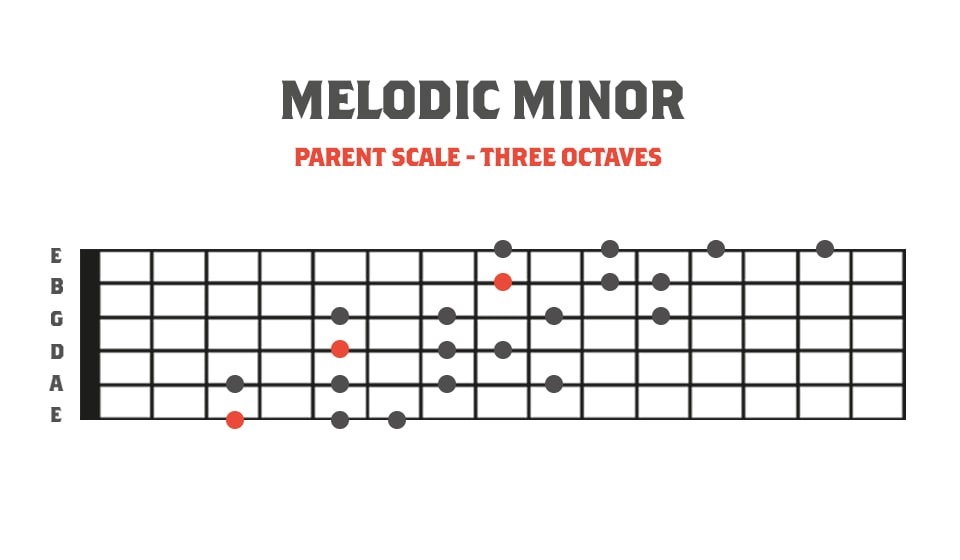
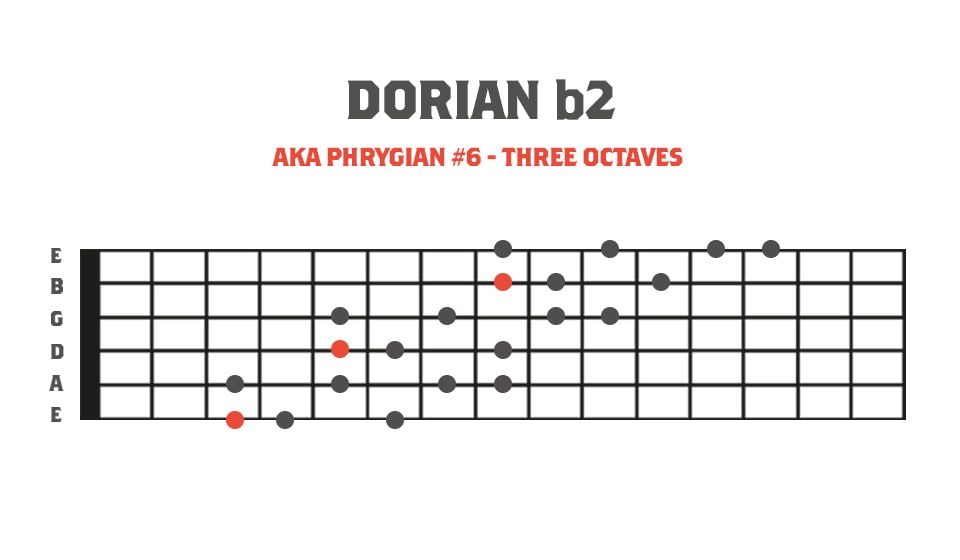
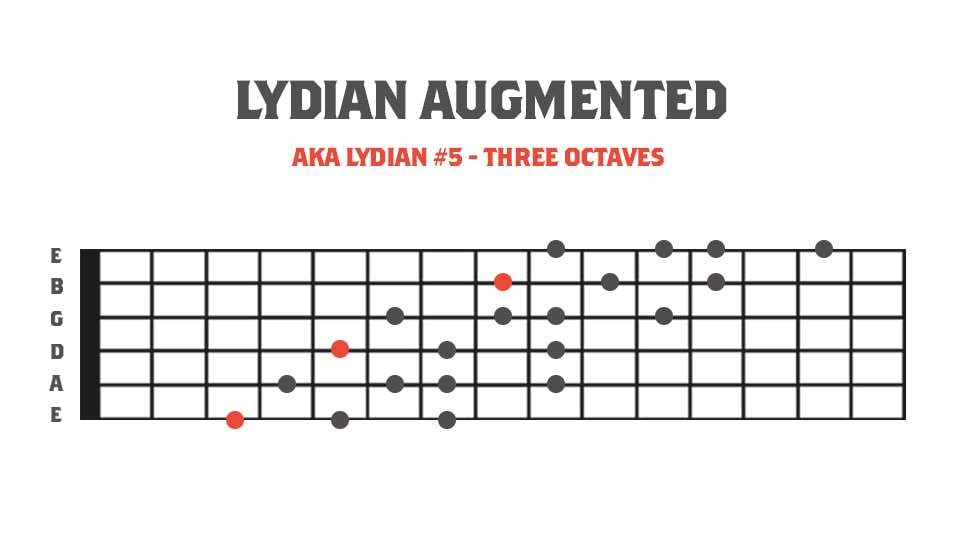
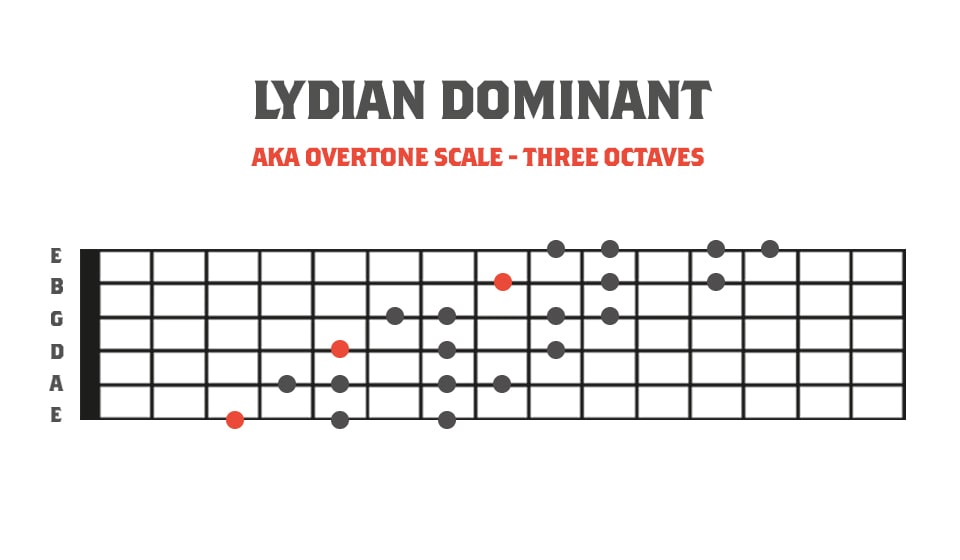
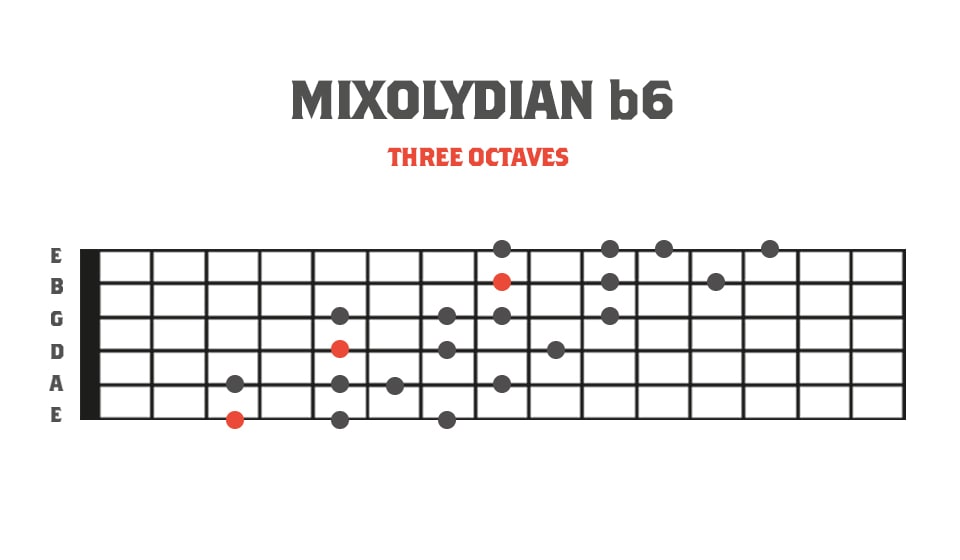
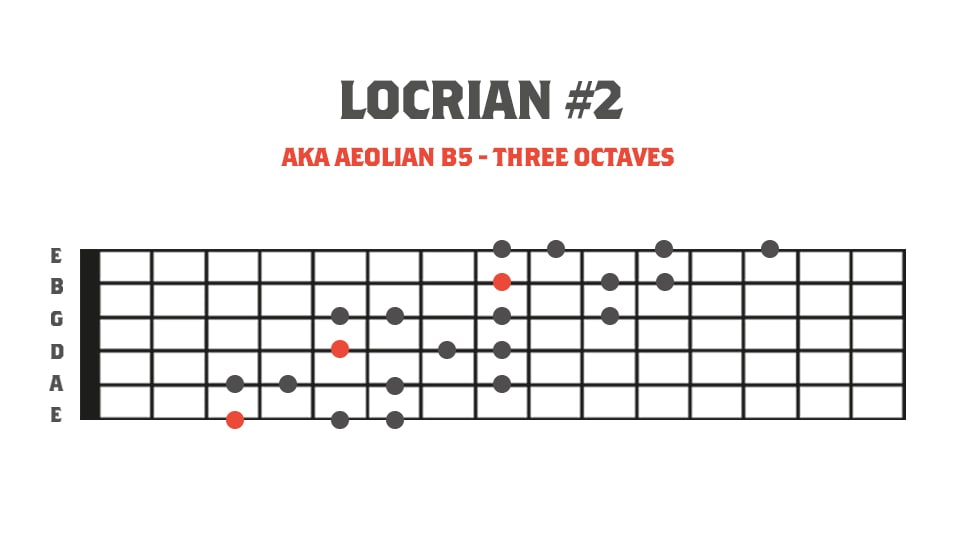
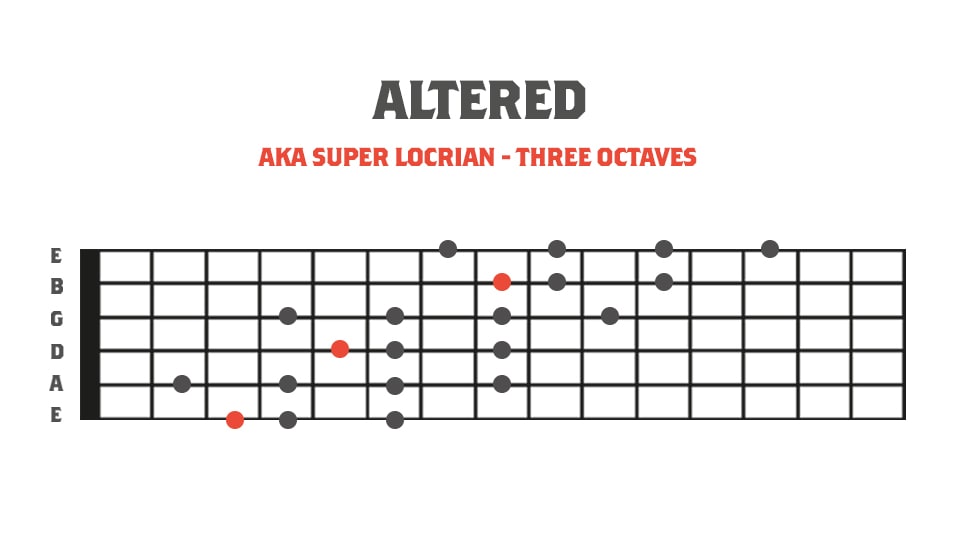
Referencing The 3nps Positions
Already mastered the 3nps melodic minor modes? Great! This will help you know where you are on the fretboard when you transition into these 3 octave versions.
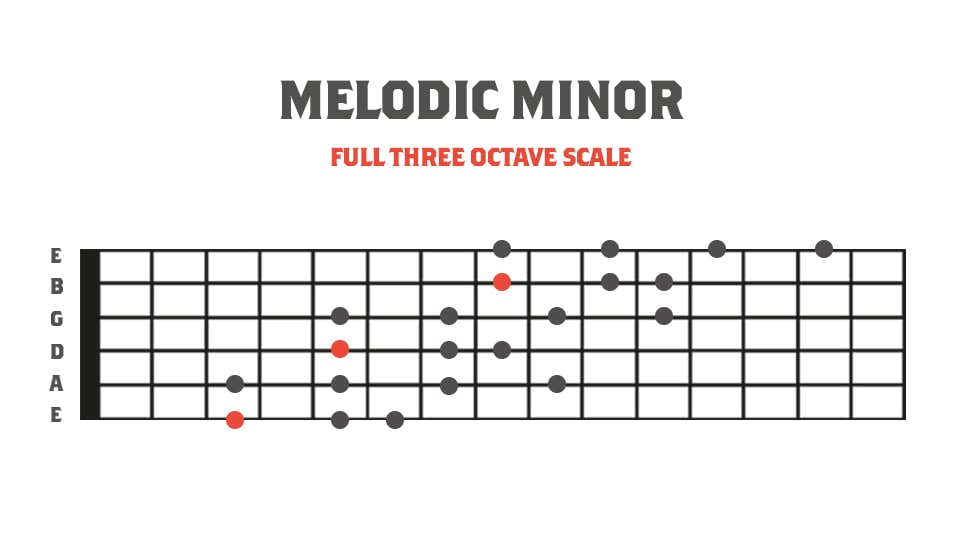
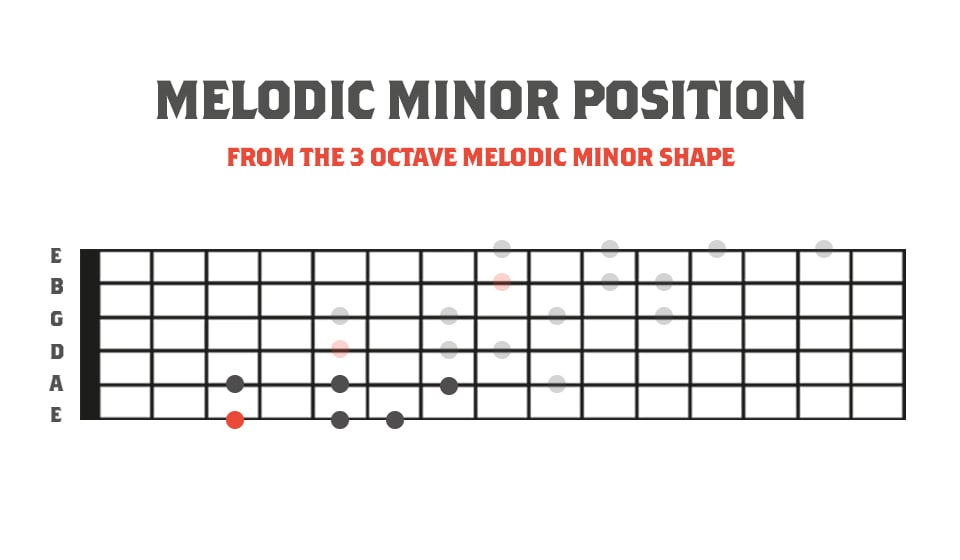
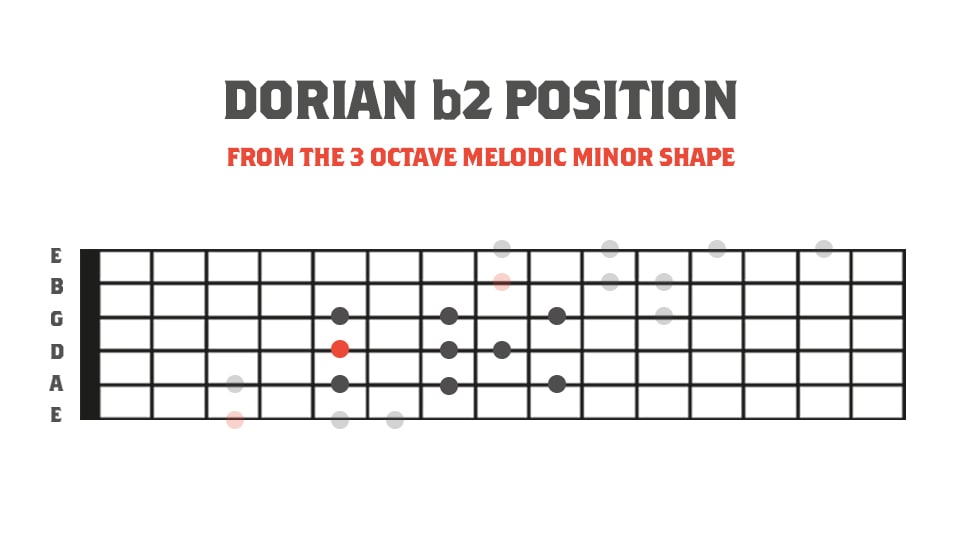
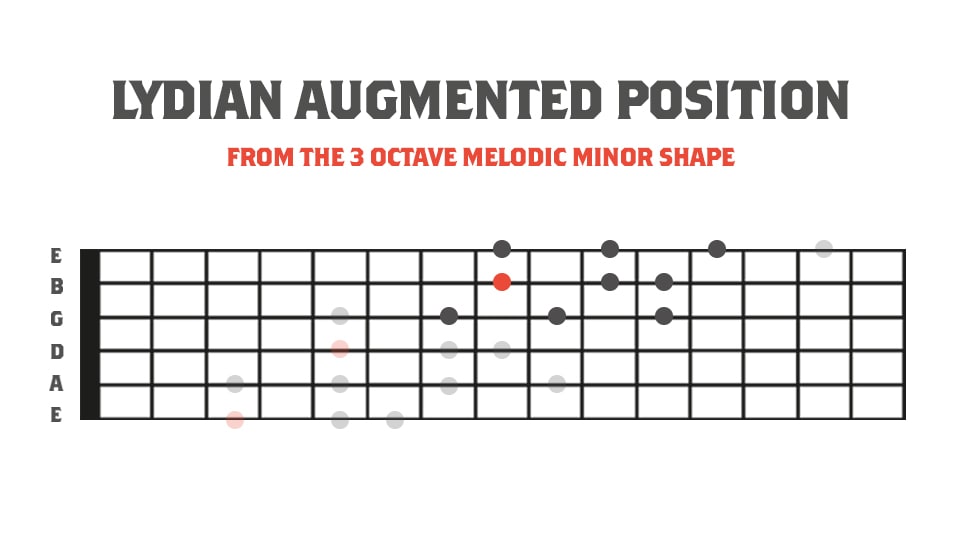
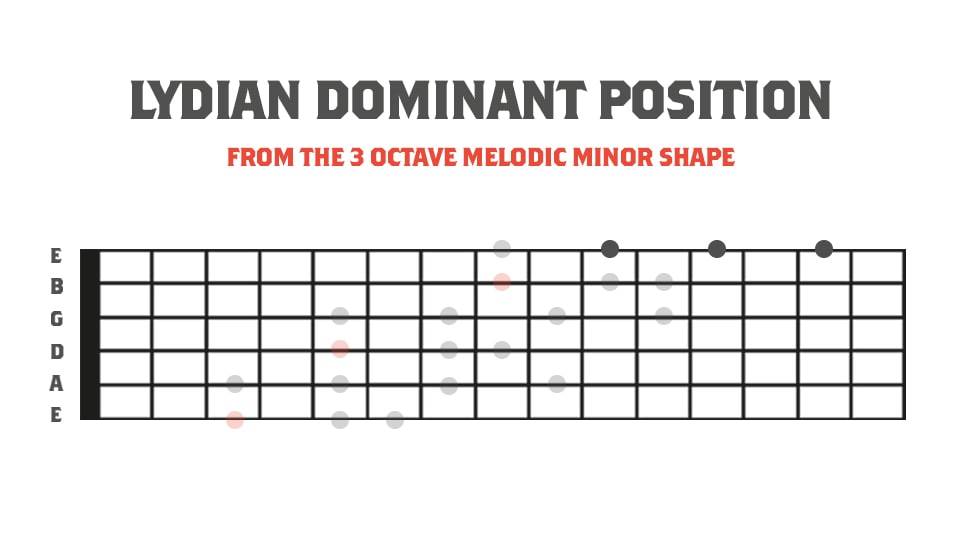
Some Helpful Theory: Thinking Modally
At Strings of Rage™ we always show the root note of each mode as opposed to the root of the key or parent scale. Understanding the difference between the two is the key to writing modally and truly mastering the modes. We have intentionally not provided fretboard positions for each mode. Please don’t assume each of these are based off the root note G.
Example Key of G Melodic Minor: G, A, Bb, C, D, E, F#
- G Melodic Minor – Parent Scale
- A Dorian b2 – Second Mode
- Bb Lydian Augmented – Third Mode
- C Lydian Dominant – Fourth Mode
- D Mixolydian b6 – Fifth Mode
- E Locrian #2 – Sixth Mode
- F# Altered – Seventh Mode
Some Helpful Theory: Harmonising The Modes
What chords does the melodic minor scale yield? Melodic minor tends to be quite dissonant and “augmented” in its sound. However, as is true for any scale or mode, there is multiple chord possibilities for each note of the scale. This scale is most common in jazz but however we can take advantage of its dissonance for a more rock and metal sound.
- G Melodic Minor
- G Minor Major 7 – G, A#, D, F#
- A Dorian b2
- A Minor 7 – A, C, E, G
- A# Lydian Augmented
- Bb Augmented – A#, D, F#
- C Lydian Dominant
- C Dominant 7 – C, A# E, G
- D Mixolydian b6
- D Augmented – D, A#, F#
- E Locrian #2
- E Minor 7 b5 – E, A# D G
- F# Altered
- F# Augmented – F#, A#, D, E
Don’t forget; there are many more chord possibilities that can be built from each root note. We’ve simply derived the most commonly known ones by harmonising the scale to form chords. We must leave it up to you to discover other chordal formulae!
Download The eBook – Become A Strings of Rage™ Syndicate Member!
We’ve put this lesson into a single resource that contains all the diagrams, theory and tab from this lesson so you can learn these concepts properly in your own time.
Head over to our Patreon page and join one of our Strings of Rage™ Syndicate Membership tiers to unlock. All memberships help us to create better quality lessons and are helping us to craft a unique online learning experience. Thanks for the support!
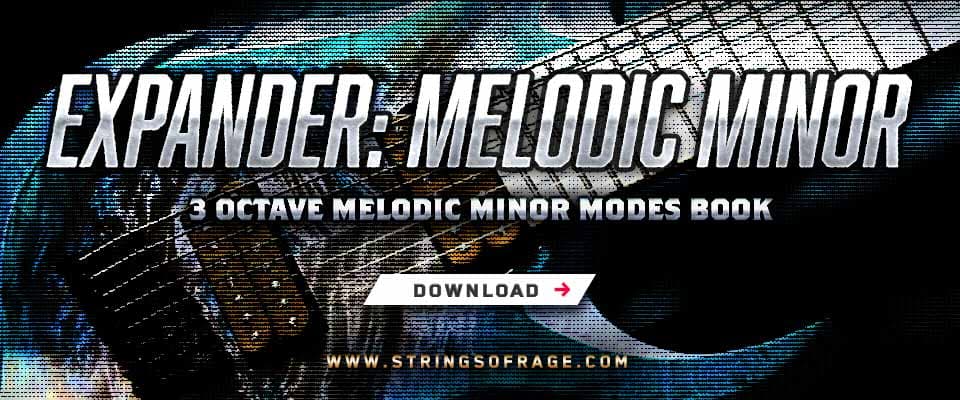
Put It Into Practice:
To put your modal mastery into practice why not start writing some licks with these new mode shapes? Bear in mind your licks will need to be played over the correct backing track to truly bring out the sound of the mode.
Footnote: The guitar featured in the cover of this post is a Nebelung 8 string multiscale guitar by Skervesen Guitars. They are a European luthier hand crafting some of the finest guitars in the world.

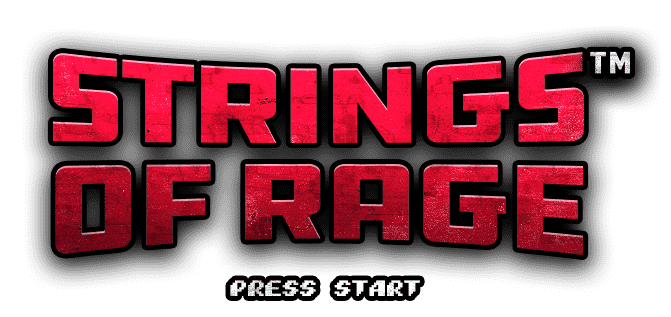
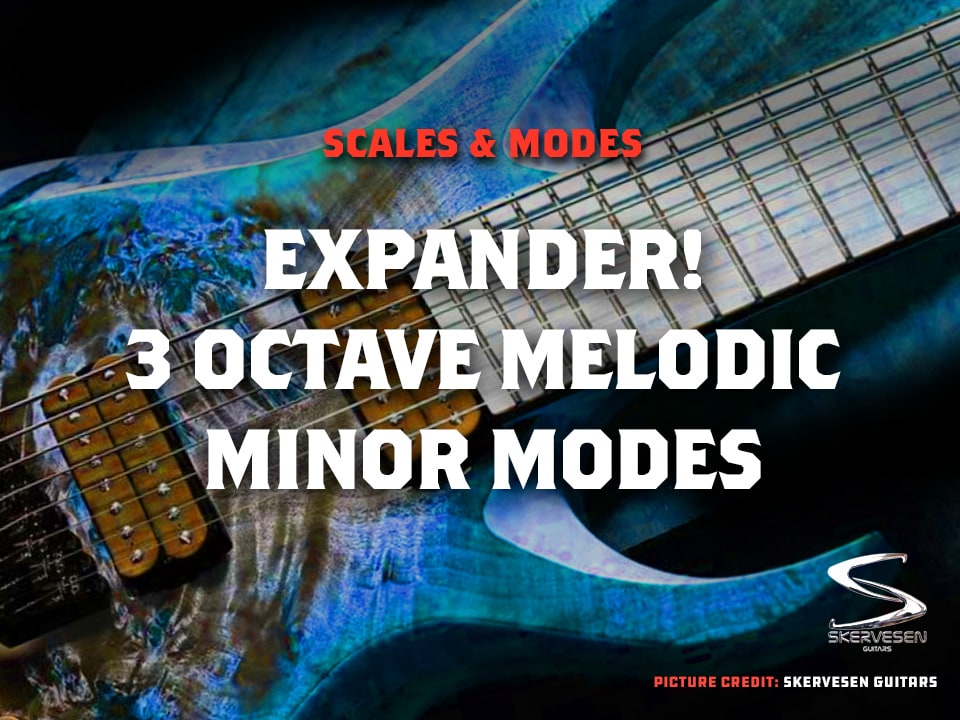
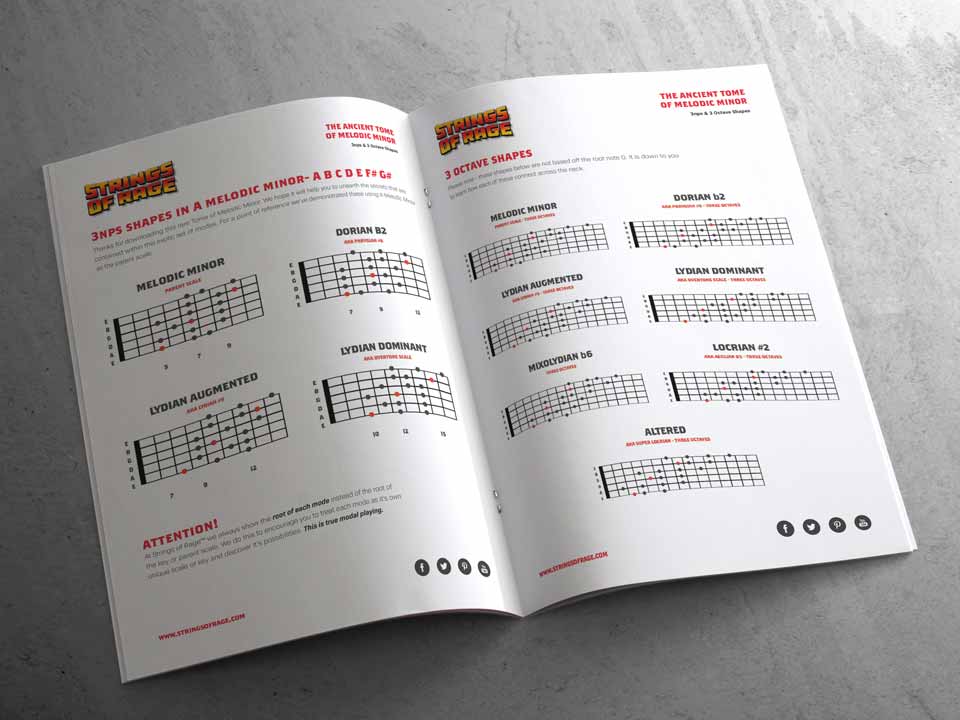
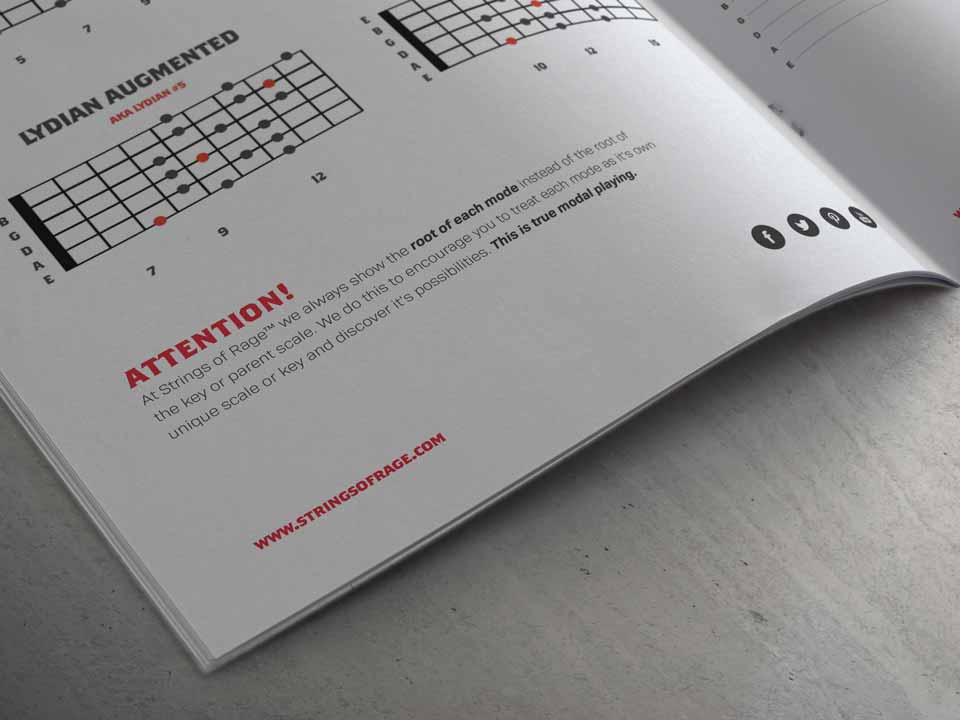
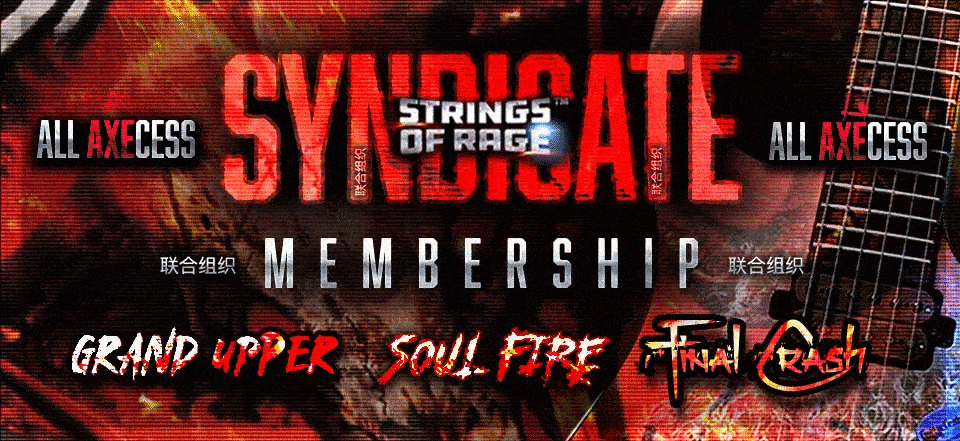



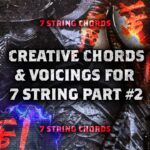


No Comment